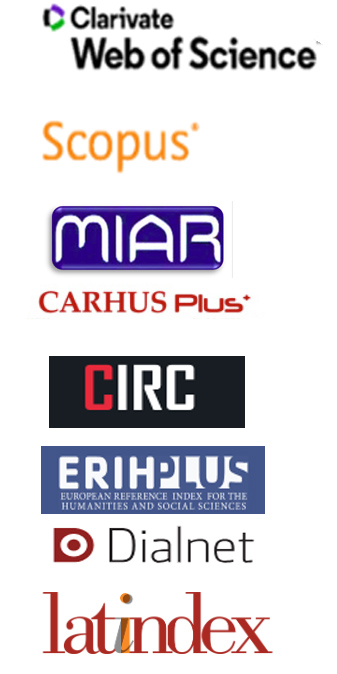The use of a virtual image as a step to the aesthetic presentation of an overpainted baroque painting
Resumo
A tecnologia tornou-se uma parte importante do trabalho do conservador, e ainda estamos a aprender a utilizá-la na sua totalidade para uma melhor prática. O principal problema é a falta de tempo para o tratamento do património cultural e o insuficiente conhecimento no campo da tecnologia. Neste artigo, apresentamos o uso de uma imagem virtual como meio de auxílio no restauro da pintura Mater Dolorosa de um famoso pintor barroco esloveno Marko Layer. O complexo estado de conservação da pintura indicava a necessidade de uma abordagem diferente ao implementar os procedimentos. A documentação gráfica das áreas que precisavam de ser removidas e reintegradas foi feita para que se conseguisse ter uma visão transparente do trabalho que se seguia. Para ajudar na remoção e no processo de reintegração, foi feita uma imagem virtual da pintura reintegrada com as suas opções. O objetivo foi conhecer melhor as especificações da pintura. Durante a execução da imagem virtual, a pintura foi pesquisada em detalhe para aplicar corretamente a teoria à prática.
Downloads
Referências
AMBROŽIČ, N. (2013). Odstranjevanje laka in preslikav na sliki Marka Layerja Mater Dolorosa. Diplomsko delo. Ljubljana: University of Ljubljana.
BARNI, M.; BARTOLINI F.; CAPPELLINI, V. (2000). “Image processing for virtual restoration of artworks”, IEEE Multimedia, 7: 34-37, https://doi.org/10.1109/93.848424.
BATIHA, K., AL-SALAIMEH, S., BESOUL, K. (2007). “Digital Art and Design”, International Journal Information Technologies and Knowledge, 1: 147-151, http://hdl.handle.net/10525/245.
BUZZANCA, G. (2000). “A User-friendly Approach (... More About Standards and Customized Menus in Digital Recording of Condition)”. In GraDoc, Graphic Documentation Systems in Mural Painting Conservation, Schmid, W. (ed.), Rome: ICCROM, 147-159.
KAVKLER, K., JUVAN, P., PRESTOR, M. (2012). Marko Layer, Mater Dolorosa, Narodna galerija: poročilo naravoslovnih preiskav. Ljubljana: Zavod za varstvo kulturne dediščine, Restavratorski center.
LIMONCELLI, M., SCHEPIS, L., GERMINARIO C. (2017). Virtual Restoration. Paintings and mosaics. Rome: «L’ERMA» di BRETSCHNEIDER.
MACBETH, R. (2012). “The technical examination and documentation of easel paintings”. In Conservation of Easel Paintings, Rushfield, R., (ed.). London: Routledge, 291-305.
MOORE, M. (2001).“Conservation Documentation and the Implications of Digitisation”. Journal of Conservation and Museum Studies, 7: 6-10, http://doi.org/10.5334/jcms.7012.
SAUNDERS, D., CUPITT, J., PADFIELD J. (2006). “Digital Imaging for Easel Paintings”. In Digital Heritage: Applying Digital Imaging to Cultural Heritage, Macdonald, L., (ed.), Amsterdam etc.: Butterworth-Heinemann / Elsevier, 521-547.
STERLE, A. (2019). Estetska prezentacija preslikane baročne slike Mater Dolorosa Marka Layerja. Diplomsko delo. Ljubljana: University of Ljubljana.
STOLS-WITLOX, M., ORMSBY, B., GOTTSEGENIN, M. (2012). “Grounds 1400–1900 and Twentieth-century grounds”. In Conservation of Easel Paintings, Rushfield, R. (ed.). London: Routledge, 161-188.
RENÉ DE LA RIE, E., QUILLEN LOMAX, S., PALMER, M., DEMING G., MAINES, C. A. (2000). “An investigation of the photochemical stability of urea-aldehyde resin retouching paints: removability tests and colour spectroscopy”, Studies in Conservation, 45: 51-59, https://doi.org/10.1179/sic.2000.45.Supplement-1.51.
Os autores conservam os direitos de autor e de propriedade intelectual e garantem à revista Ge-Conservación o direito de edição e publicação do trabalho, sob a Creative Commons Attribution License. Este permite a partilha do trabalho, por outros, com o reconhecimento da autoria do trabalho e da publicação inicial nesta revista.
Os artigos podem ser utilizados para fins científicos e formativos, mas nunca com fins comerciais, expressamente, sancionados por Lei.
A informação existente nos artigos é da exclusiva responsabilidade dos autores.
A revista Ge-Conservación e os autores podem estabelecer, em separado, acordos adicionais para a distribuição não exclusiva da versão da obra publicada na revista (por exemplo, colocá-la num repositório institucional ou publicá-la em livro), com o reconhecimento da sua publicação inicial nesta revista.
É permitido e incentivado aos autores difundirem os seus trabalhos, electronicamente (por exemplo, em repositórios institucionais ou no seu próprio site) depois da sua publicação na revista Ge-Conservación, já que pode dar lugar a intercâmbios produtivos, assim como a citações mais amplas e mais cedo dos trabalhos publicados pelo autor.
Os dados pessoais fornecidos pelos autores são utilizados, unicamente, para os fins da revista e não serão proporcionados a terceiros.









